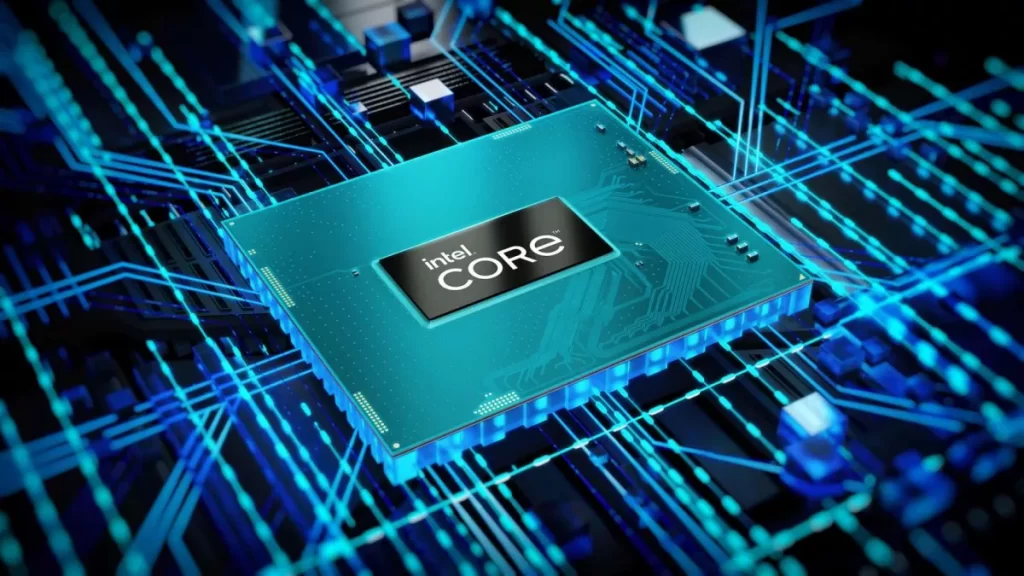
Incorporated GPU with beam following help could show up the following year
Intel Meteor Lake processors, the following cutting edge CPU from Intel due out in 2023, are supposed to highlight beam following help on a tiled-GPU engineering, denoting a significant step in the right direction for the innovation.
Beam following is a delivering cycle that lights up a delivered scene by impersonating the manner in which we really see light. This sounds practically senseless (don’t we see all light?), yet causing a counterfeit situation look normal requires working out the multifaceted material science engaged with how light acts, and this is a really overwhelming undertaking according to a computational point of view.
The way things are, beam following innovation is as of now just practical in gaming PCs with the best designs cards or the best gaming workstations with discrete GPUs, making it a progressive innovation that remains locked away in more “first class” applications on very good quality equipment.
Intel’s carrying the innovation to its “coordinated” Intel Xe illustrations stage is a serious step forward in the innovation that could make it undeniably more open, in any case. We put coordinated in statements here since – as Wccftech(opens in new tab) brings up – it’s not exactly the same thing as current-gen coordinated illustrations; really a tiled design’s more similar to a framework on-a-chip than customary combination into a solitary CPU bite the dust.
What is important however is that this is the sort of chip that will be going into standard workstations like ultrabooks or even the best Chromebooks that highlight beefier specs like the one in our HP Elite Dragonfly Chromebook survey.
Intel is now chipping away at its own designs upscaling tech to coordinate with its fairly beleagured Intel Arc work area illustrations cards, and that tech could undoubtedly advance into Intel’s fourteenth gen processors. Assuming this is the case, it could make probably the best modest PCs truly able 1080p gaming machines.
Might Intel Meteor Lake at any point carry cutting edge designs to regular clients?

While we haven’t even gotten our hands on Intel Raptor Lake chips yet – those are supposed to send off when October of this current year – the primary Intel Meteor Lake chips could land when late 2023. Assuming that is the situation, you could be playing something like Cyberpunk 2077 with unobtrusive settings and some beam following on a base-spec Dell XPS 13 at a playable edge rate.
It is not necessarily the case that a solitary processor will transform even the best Ultrabooks into genuine gaming workstations. Yet, with the advances in GPU innovation that accompanies something like beam following, it will have subordinate advantages for by and large execution and – with legitimate settings changes (and upscaling innovation) – you will not be confined to playing light-obligation or easygoing games like Civilization VI on a fundamental PC.
With respect to work areas, this will be less of a development, since most work areas have a free PCIe space to slap in quite possibly of the best modest realistic cards around equipped for beam following, and these will totally dominate the coordinated designs of even the best processors in Intel’s fourteenth gen setup.
So this is for the most part an issue for PCs, which is the quickest developing portion of the PC market by a wide margin. Customary workstations have would in general be genuinely light on gaming execution since this decisively further develops energy effectiveness (i.e., battery duration) and minimizes expenses.
By incorporating a beam following GPU into the standard processor bundle for these PCs, we will see significantly more impressive execution across an entire scope of designs concentrated applications from video real time to gaming at a considerably more reasonable price tag.
We’ve experienced this sort of execution as of now, and it is really noteworthy

We previously saw something almost identical in our Asus ZenBook S 13 OLED audit, which is perhaps the earliest PC to highlight an AMD processor with coordinated RDNA 2 illustrations.
While the gaming execution wasn’t stunning in absolue terms, the way that you might really run Port Royal on a Ultrabook is a meaningful step forward. Tragically, finding the ZenBook S 13 OLED is a baffling test, something that wouldn’t be the situation with a PC running Intel Meteor Lake.
While it will be some time yet before we see these workstations, it’s great to realize that they are coming, and it could offer purchasers undeniably more execution without making all out penances for reasonableness like they at present need to do. This must be great for regular buyers, regardless of whether you’re a serious gamer.
